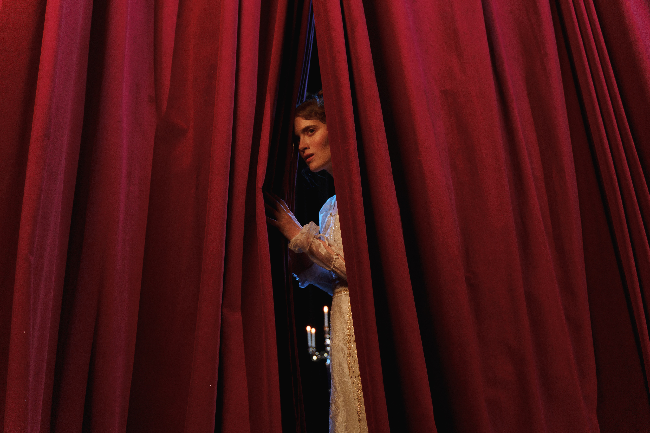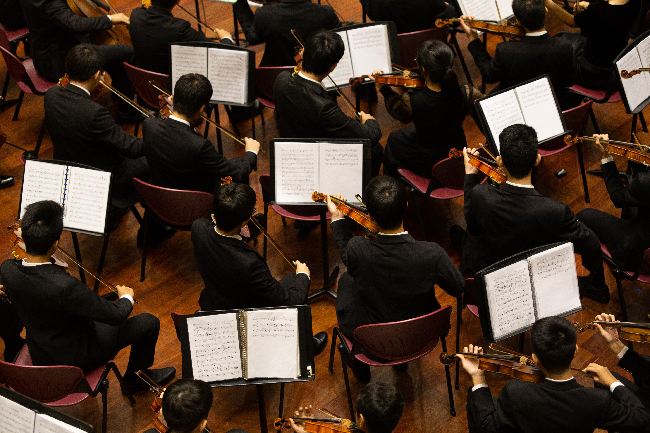Five actions arts and cultural organizations should be taking NOW
A little more than a year ago, during the tumultuous days following George Floyd’s death, I challenged arts organizations and other listeners in a TRG 30 virtual meeting to consider bold action to propel themselves forward.
I provoked that arts and cultural organizations have missions that may not be good enough anymore; systemically weak working capital; governance that limits rather than drives; weak attitudes and postures, and beliefs that place artists as creative cogs in wheels rather than central to organizational thinking.
I encouraged action, but I knew that only some leaders would get there.
And here we are today: a return to LIVE. Live performances, open exhibit halls, and live audiences and visitors. And even with the difficulties posed by reopening amidst the spread of the new Delta variant, we are, nevertheless, here, returning to live in small and large ways, depending on local communities, comfort levels and government restrictions.
But this return is about much more than a raising of curtains or an opening of doors. It is – or should be – the start of a reinvention of the arts and culture sector, caused by the implementation of new ways and new standards. 21st century standards.
Is your organization on track? If not, it may help to focus on these practical actions that are defining what it means to be a 21st century arts and cultural organization, regardless of your organizational status, be it charitable, governmental or commercial. These actions apply to all of us.
1) Listen – and listen well.
If your organization desires audience growth beyond this pandemic, what it does NOW will have an outsized impact. Retaining existing audiences and connecting with new communities now require new techniques in deeper engagement, deeper listening. Our audiences, visitors and patrons must be seen and heard and talked to now more than ever. Likely, we’ve been engaging with them largely in a transactional way, via confidence and other kinds of surveys, and now we need to ignite their imaginations, involve them in dialogue, and share with them who we’re working to become. I’m talking programs that enable closed-loop conversations designed to foster relationship more than survey campaigns designed to acquire data. Especially if they’re among the new group of participants whom we engaged in digital offerings during the pandemic.

Performance anticipation. Photo by cottonbro from Pexels.
Omaha Performing Arts (OPA) has one of the leaders that’s going solidly toward the 21st century named Joan Squires. The OPA is listening and mapping the experiences of its patrons so that the administration understands potential pain and positive points; it is gathering Net Promoter Scores (NPS) and discussing the feedback with the president and senior leaders. The idea is to have empathetic ears to different audience segments at specific points during this return and to respond accordingly. And then, always, ACT. Closing loops in communications, on a one-on-one basis, in lobbies and more. 21st century organizations know: successful futures rely on successful relationships.
2) Examine decision-making about future programming.
Arts and cultural organizations are making decisions now about programming and curation for 2022-23 and beyond, and we are seeing smart operators – 21st century ones – collect demographic and listening data described above and use it to shape those decisions. The question is: If our objective is to create programs that appeal to new and diverse audiences, well… is that really happening? It IS possible to create positive change, no matter the business model.

Violin section. Photo by Samuel Sianipar on Unsplash.
The most recent TRG Arts Comeback Planning Study reports on our industry’s plans for programming mix and shows 66% of U.S. and 58% of U.K. organizations will keep the same balance of traditional and contemporary works as before the pandemic. But Canada is doing it differently. Just 33% of Canadian organizations are keeping the same mix. They are ahead of their U.S. counterparts on making programmatic and curatorial changes that reflect our times, and in this specific case, responding to the need to reconcile national history with indigenous people. To them, I say bravo. And to other countries, courage! We need it now.
Producing organizations have a direct ability to alter plans. To that end, the Shakespeare Theatre Company (STC) in Washington, D.C., provides an example of programming changes designed to disrupt the status quo. Aligned with its mission, Artistic Director Simon Godwin is another example of a virtuously strident leader, offering two Shakespeare plays, one of which is a co-production with Theatre for New Audiences in New York City and features one of the pre-eminent Shakespearean actors in the country, John Douglas Thompson, as Shylock in The Merchant of Venice. STC’s upcoming season also includes a drama about pioneering Black actor Ira Aldridge (one of only 33 English actors honored at the Shakespeare Memorial Theatre in Stratford-upon-Avon, and the only one of African-American descent). And a first for STC: a Broadway-bound musical, Once Upon a One More Time featuring the songs of Britney Spears. Courageous and different.
Presenting and receiving houses face more limits insofar as executives must book what’s available to purchase in any given year. And here I have questions: is local talent available that might better reflect the tone and need in your specific community? How could you communicate your intention to both agents and your community? And finally: truth is, we’re all waking up to the need for more diverse, inclusive programming. It’s out there. Go get it.
3) Manage inventory and access to deliver on your mission.
If arts and cultural organizations intend to attract new stakeholders and communities, they must reconcile whether access and inventory management meets the intention. Talk is cheap. Inventory and access is where the rubber hits the road, and I see few leaders willing to disrupt the status quo with existing loyalists to enable access for the broader community. CEOs and boards talk about wanting to engage different, broader communities, but do inventory or event access practices follow? Whether desired new participants are of a different age or race, in a different geography or some other demographic group, our actions say EVERYTHING about our commitment.
The Virginia Symphony Orchestra is one of the organizations we know leading the way here. Karen Philion is another 21st century leader who has created a way to ensure and measure the organization’s commitment to new audience development. The VSO has created a “Catalyst Team” made up of marketing, development and community outreach leaders who are working together to invite new communities to access specifically held seats and other “catalyst” experiences. The goal? Not only to invite, but also deepen, over time, the relationship with the VSO.
The 21st century organization will match up its seats and event inventory and find a way to provide access that matches its intentions. This will be hard. But this is important and brave work, and necessary to enable future stakeholders to see themselves in the spaces they inhabit.
4) Before you press “send,” consider other ways of connecting.
In the “everything-old-is-new-again” category, direct mail seems more like a novelty. These days, when everyone is glued to their phones and laptops; when every event takes place in Zoomland, a piece of mail in your physical mailbox (do you still have one??) feels distinctively old-school. And yet:
Today, this kind of “novel” communication method may be more engaging to people swimming (drowning?) in a constant flow of digital information; especially newer, younger audiences who may delight in a tactile direct mail piece.

You’ve got mail. Photo by Carlos Cuadros from Pexels.
According to the Data & Marketing Association, the average direct mail response rate is now 5-9x higher than email, and almost 90% of direct mail gets opened, compared to 20-30% of today’s emails. Other things to consider from the D&M Association and other data from Canada and the U.K.:
- Over-sized envelopes have the highest response rate (5%).
- A full 60% of catalog recipients report visiting the company’s website.
- Epsilon reports that 73% of American consumers prefer to be contacted by direct mail because they can read it on their own time in a variety of places easily.
- While the best target age for direct mail responsiveness is 45-54, Millennials report a purchase preference for direct mail over email, too.
- In Canada, Canada Post conducted neuromarketing research that showed direct mail is easier to understand, more memorable, and 20% more persuasive than digital media.
- And according to Royal Mail Marketreach, the UK’s leading expert on the power of mail, a record 96% of all mail was engaged with during lockdown, and 70% of consumers say mail makes them feel more valued.
Some of the best practices that served us well before email can serve us well in the 21st century, too. Right person, right message, right way.
5) Learn systematically from your experiences.
“Learning agility” is knowing what to do when you don’t know what to do, and it requires effort and commitment from individual leaders and staffs, especially those working in organizations that believe “agility” is a word that applies only to Olympic gymnasts.
Earlier this year, a Forbes article by Lara Albert of human capital management firm SAP SuccessFactors, described learning agility as the new organizational “it” factor, saying, “Learning agility is a concept that amplifies a human instinct to learn, adapt, unlearn, and relearn. It's how we keep up with constantly changing conditions and figure out new ways to navigate them without actually knowing what to do. But instead of using gut instincts, we rely on past and present experiences to make sense of any uncertainty. Fostering a workplace culture that is open to new ideas empowers employees of all levels to challenge the status quo and drive change – which is a tremendous departure from yesterday's hierarchical structures.”

Orchestra with audience. Photo by Manuel Nägeli on Unsplash.
I couldn’t agree more, and this year we have been teaching learning agility to a group of international arts CEOs. It’s not rocket science, but it does require intentional focus on things like post-mortems, slowing down to ensure we receive, and deliver, feedback, seeking out new experiences so that we can practice being uncomfortable and more.
One more thing: having diverse perspectives on teams helps create learning-agile environments. A terrific article in Harvard Business Review entitled, “Teams Solve Problems Faster When They’re More Cognitively Diverse,” explains why, but my net-net: there are so many reasons why we should be recruiting diverse people, with diverse experiences and perspectives. This is just one more.
Too often, we hire new people, insisting they need arts and culture experience, show them a desk, get them started on a project, and fail to follow through on what is and isn’t working. And then the failure is their fault? 21st century organizations know that new models for day-in-day-out working are required to thrive in 2022 and beyond.
And a shoutout to Celebrity Series of Boston! Their executive leader, Gary Dunning, is investing in learning agility — learning it, so that they can make it part of their culture and eventually teach it to future staff. They know that the resilient future of their organization will require a team that does things well, even when they don’t know exactly what to do.
The moment is NOW
I can’t encourage it enough. Arts and cultural organizations that want to ensure relevancy moving forward must take action now.
Are you inspired? Do you know your next steps? You can continue the discussion by signing up for my newsletter here. I want to gather the stories of what defines a 21st century arts organization, and you can help me do it with your powerful examples.
And if your organization wants something more, such as support with ongoing guidance and direction to inspire your future resilience, take the next step and schedule a call with TRG Arts here.
Jill S. Robinson CEO | TRG Arts

Jill S. Robinson is CEO of TRG Arts (The Results Group for the Arts), a renowned international, data-driven change agency and a ColoradoBIZ Top 100 Women-Owned Company. As a driving force in the arts and culture sector, Jill has inspired leaders and organizations for more than three decades, and her expertise and counsel are sought out by arts and cultural executives worldwide. Jill believes in the transformative power of arts and culture experiences, and that positive, profound change in the business model of arts organizations leads to artistic innovation that can inspire entire communities.
More Blogs from JillLeaders: Do you consider yourself to be creative?
This year, I'm on an exploration of creativity, sharing reasons why the arts and culture sector isn’t as creative or resilient as it could be. I invite to you to join me: I'd love to engage with you about what I’m seeing, what you’re seeing, and what we might do to make a difference.
Join Me
